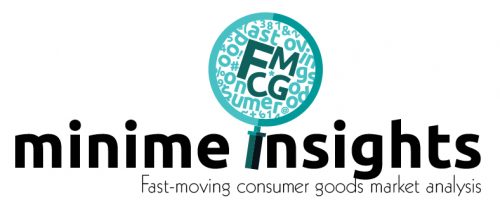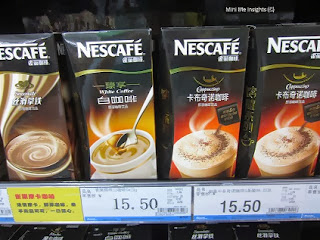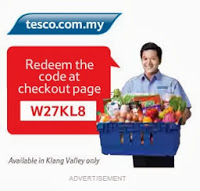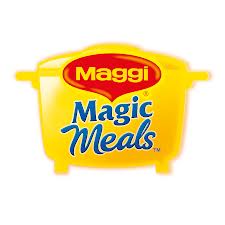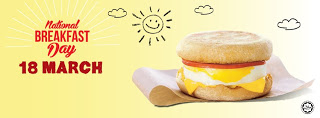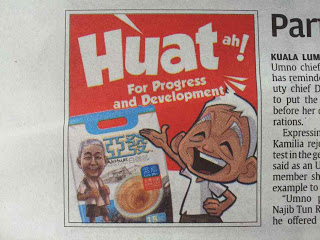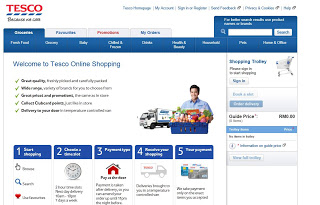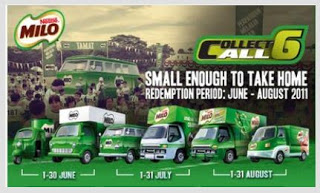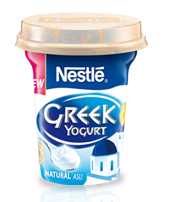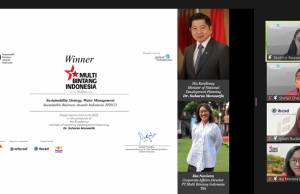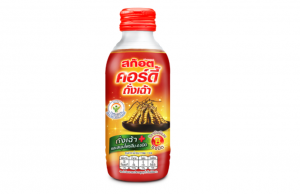Empire Strikes Back!
Let’s see if there is any price difference between an imported OldTown original flavour white coffee and a Nescafe white coffee in China. During a store check in Chengdu, the Nescafe White Coffee (5x29g) is selling for RMB 15.50 or RMB 0.107 per gram, while the OldTown Original Flavour White Coffee (360g) is selling for RMB 36.90 or RMB 0.103 per gram. Given the usual case of lower selling price per unit for larger pack, it seems there is not much price difference between Nescafe and OldTown white coffee products in China. However, Nescafe has the distribution reach and its products have better shelf placement whereas OldTown is not carried in most stores and its products are usually located in the imported food section, which implies that they are usually more expensive than the rest.
Therefore, it is not at all surprising to see mainland consumers becoming more acquainted with the taste of Nescafe white coffee given the brand’s strong distribution and marketing prowess in China.
Tesco W27KL8
Tesco has recently launched an aggressive push to popularise its online home delivery service. I was surprised to find a stack of Tesco postcard-sized DM in my mailbox at home. The DM contains a voucher code worth RM 20 that can be used for orders valued at RM 100 or more. However, the actual savings is only RM 10 since the cost of delivery is RM 10.
A Season for National Service
Maggi Magic Meals – Locally Inspired ?
 Wait a minute, did Nestle R&D staff got the inspiration for Maggi Magic Meals from beggar herbal chicken乞丐药材鸡, which is wrapped in aluminium foil sometimes with a layer of plastic to keep the herbal soup from leaching. So this may be a case of a locally inspired product that has gone regional 🙂
Wait a minute, did Nestle R&D staff got the inspiration for Maggi Magic Meals from beggar herbal chicken乞丐药材鸡, which is wrapped in aluminium foil sometimes with a layer of plastic to keep the herbal soup from leaching. So this may be a case of a locally inspired product that has gone regional 🙂
KFC’s a.m getting darker
KFC’s a.m. strategy seems to be failing due to the lack of imagination. Look at McDonald’s, the company has stormed the market with its headline-grabbing free breakfast campaigns. People were seen queuing at McDonald’s outlets since early morning to get their share of freebies. Yours truly was one of them. What the McDonald’s breakfast campaigns have achieved after giving out thousands of free burgers was to make consumers warm up to the idea of having burgers (US: breakfast sandwiches) and coffee/tea for breakfast. With the trial, the US fast food giant hopes to turn unique consumers into repeat users and better use of the underutilised morning daypart. KFC conducted a very much muted campaign by giving away vouchers for discounted breakfast meals as part of its March 2013 breakfast deals. However, the breakfast meals were not free and as a result of that it failed to excite consumers. Getting the coupons itself was a tough job too. The two contrasting marketing styles mean that consumers are more aware of McDonald’s breakfast offerings as many have tasted them through the free breakfast promotions. What KFC needs to do is to promote its breakfast fares to consumers and one of the best ways is to have a free breakfast day.
KFC conducted a very much muted campaign by giving away vouchers for discounted breakfast meals as part of its March 2013 breakfast deals. However, the breakfast meals were not free and as a result of that it failed to excite consumers. Getting the coupons itself was a tough job too. The two contrasting marketing styles mean that consumers are more aware of McDonald’s breakfast offerings as many have tasted them through the free breakfast promotions. What KFC needs to do is to promote its breakfast fares to consumers and one of the best ways is to have a free breakfast day.
Have a Cuppa and Enjoy the Election
In Malaysia, election is around the corner. On 5 May 2013, Malaysians will know if the ruling coaling BN or the opposition Pakatan will win. In the meantime, coffee companies are busy advertising on the newspapers to take advantage of the election fever.
Power Root (M)’s Ah Huat marketing is very innovative. The company cleverly uses Ah Huat as a politically neutral fictitious election candidate with a funny face to bring a lighter moment to the serious business of election. Regardless of who wins, a vote for Ah Huat means a vote for progress and development.
So have a cuppa, sit back and huat ah!
Tesco – Trying to be Ahead of the e-Grocery Game
Tesco has launched Grocery Home Shopping Service, touted as the first online grocery shopping service in Malaysia by a hypermarket operator. Finally, one can do their grocery from the comfort of their office/house for a fixed delivery fee of RM 10. Delivery can be made from 10am to 10pm seven days a week. The address is at http://eshop.tesco.com.my/. Phase one will cater to residents living within the 20km radius of Tesco Mutiara Damansara.
This service is ideal for image-conscious office ladies who do not wish to carry products that are heavy like rice and edible oil and stuff that are bulky and not nice like toilet rolls. The service is also good for people without their own transport and those living in high rise apartments.
Key risk is consumer satisfaction: The price in the order confirmation email may defer from the final bill. That is why Tesco calls it guide price. Four reasons were given for the different prices – changing in-store prices, substitutions (when the product is unavailable on the day of the delivery, the customer will be given a substitution that they either accept or decline), weighted products (depending on the scale) and promotion dates (if your delivery slot is booked for after the promotion end date, the promotion price will not be applied).
Why e-store? Tesco is seeing its top line growth slowing down mostly due to strong competition from smaller store formats including minimarts with the likes of 99 Speedmart and KK Super Mart as well as the growth of local hypermarket chains/wholesalers such as NSK, TLC Hypermarket, Jaya Grocer and Econsave. E-grocery may add some growth momentum and excitement to Tesco.
|
Tesco (Malaysia)
|
2005/06
|
2006/07
|
2007/08
|
2008/09
|
2009/10
|
2010/11
|
2011/12
|
2012/13
|
|
Revenue (RM m)
|
1,113
|
1,678
|
2,564
|
3,297
|
3,543
|
3,876
|
4,345
|
4,591
|
|
yoy (%)
|
–
|
50.76
|
52.80
|
28.59
|
7.46
|
9.40
|
12.10
|
5.66
|
|
Hypermarket (no.)
|
10
|
19
|
19
|
28
|
31
|
37
|
45
|
47
|
|
Other (no.)
|
3
|
–
|
1
|
1
|
1
|
1
|
1
|
1
|
I believe Tesco has also sensed the rising B2C market in Malaysia and the opportunities for online grocery shopping. Malaysians are not just spending huge on AirAsia air tickets but also on other stuff on B2C sites like Lazada and Zalora etc.
The e-commerce venture will be a cash-burning business in the initial phase unless volume picks up, which is the ideal case. The worst case is Tesco can easy fold it and try again another time.
Retro Campaign and White Coffee
After the Milo throwback campaign in 2011, Nestle is engaging in another retro marketing for Nescafe, which is celebrating its 75th anniversary in 2013. This time, it is not about collecting old Milo delivery vehicles but celebrating more beautiful moments with Nescafe.
Retro sells in Malaysia when it comes to white coffee, a popular coffee originated in Ipoh. The coffee is usually roasted in margarine, brewed and served with sweetened condensed milk. Companies that can project the authenticity of their white coffee will thrive in the battle for a share of consumers’ spending. Market leader OldTown, which was the first to popularise the 3-in-1 white coffee blend and the modern kopitiam restaurant chain, has the natural advantage. The company was set up by the son of the owner of Nam Heong Coffee Shop in Ipoh. Nam Heong started selling one of the most genuine white coffees in 1958.
The popularity of OldTown white coffee has inspired a host of new competitors including Nescafe and Super Group and the only thing they share in common is the use of the Nanyang traditional coffee cup and saucer on their white coffee packaging and the occasional use of the word Ipoh to denote authenticity.
New comer Power Root (M) knew that in order to stand apart from the rest of the competitors, it had to do something differently. The company created the Ah Huat character, which means prosperity in the local Hokkien dialect. The middle-aged man is depicted as your friendly coffee expert who has been brewing and serving white coffee for a long time from his traditional kopitiam store. This fictitious character helps Power Root to lay claim to tradition and authenticity. The melody that accompanies the advertisement is catchy with the word “huat” featuring many times in the lyric. The music and the use of the word “huat” resonate well with Chinese consumers who love to “huat” or become wealthy (who doesn’t want to be wealth these days). The Ah Huat white coffee also markets well during Chinese New Year as gifts due to the prosperous connotation.
Beyond Malaysia, the Ah Huat white coffee can easily tap Chinese-speaking markets especially Singapore and China. The key disadvantage of the Ah Huat marketing is the difficulty to tap the Malay market in Malaysia.
For Nescafe, the key challenge is to convince white coffee lovers that its white coffee tastes authentic, just like what you get from the kopitiam in Ipoh. This may mean that the company may need to spin more retro tales to increase acceptance.
Greek Yogurt Aims for the Up Market
The Greek yogurt craze has finally arrived on Malaysian shores with the Nestle Greek Yogurt, which comes in three variants – Natural, Strawberry Field and Peach Harvest. What makes Greek yogurt so expensive is its high protein content and thick texture. According to Nestle Malaysia, “every 2 servings of Nestlé Greek Yogurt Natural 135g provide 24% of adult daily protein requirement.”
Greek yogurt is not cheap. It is priced at the upper end of the market, making Nestle Greek Yogurt the most expensive yogurt in Malaysia by unit price.
|
Product
|
RM/gram
|
Volume (g)
|
RM
|
|
|
Premium
|
Nestle Greek Yogurt
|
0.0289
|
135
|
3.90
|
|
Elle & Vire 0% Fat Yogurt
|
0.0279
|
125
|
3.49
|
|
|
Milkana & Fruits
|
0.0260
|
100
|
2.60
|
|
|
Medium end
|
Fernleaf Calci-Yum
|
0.0185
|
60
|
1.11
|
|
Nestle Smooth & Fruity Selection
|
0.0181
|
135
|
2.45
|
|
|
Nestle Extra Creamy & Fruity Paradise
|
0.0178
|
135
|
2.40
|
|
|
Fernleaf Calci-Yum MAX
|
0.0154
|
110
|
1.70
|
|
|
Anlene Yogurt Mango
|
0.0150
|
110
|
1.65
|
|
|
Low end
|
Nestle Fat Free Yogurt Kiwi
|
0.0126
|
135
|
1.70
|
|
Marigold 0% Fat Yogurt
|
0.0110
|
150
|
1.65
|
|
|
Nutrigen LiteYo Yogurt
|
0.0107
|
135
|
1.45
|
|
|
Marigold Low Fat Yogurt
|
0.0103
|
150
|
1.55
|
Will customers give in to the temptation? Perhaps yes for the novelty of it. Given the low fat, high protein and most of all thick and creamy taste, this product will appeal to consumers who are looking to indulge in a premium yogurt. The distribution channel is also important. This product is more likely to appeal to consumers who are less price sensitive such as expats who are aware or have tasted Greek yogurt. Therefore, Nestle Greek Yogurt should be made available in areas like Mont Kiara and Bangsar where there are a large expat community.
Will local Marigold follow suit with a Greek yogurt of its own with a much lower price point? I really do hope so because RM 3.90 for a yogurt seems awefully expensive to me.
